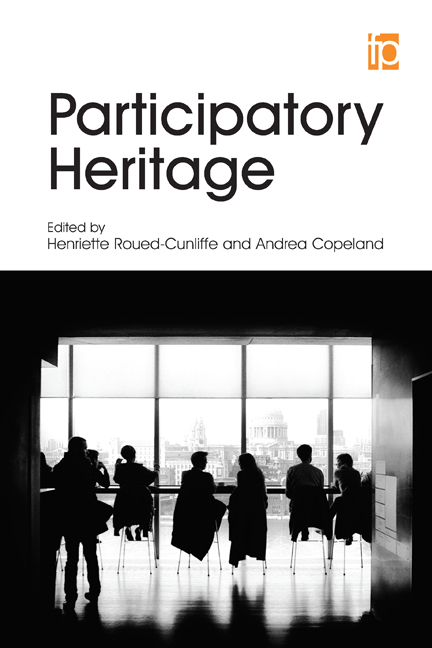Introduction: what is participatory heritage?
Published online by Cambridge University Press: 08 June 2018
Summary
PARTICIPATORY HERITAGE COULD be thought of as a space, a space in which individuals engage in cultural activities outside of formal institutions for the purpose of knowledge sharing and co-creating with others. Those engaged with participatory heritage collaborations tend to place more importance on content and less importance on medium, process or professional expertise; thus they acknowledge a diversity of expertise and operate from a premise of shared authority. The collaborations are bottom-up in nature, as they emerge from connections among individuals rather than organizations.
Participatory heritage activities do not necessarily interact with cultural heritage institutions, which are governed by policies and procedures and are hindered by legal and budgetary constraints. These institutions employ information experts who guide practices and innovation in information organization, access and use. They typically do not employ community experts and increasingly are employing fewer subject experts (Gerolimos, Malliari and Iakovidis, 2015). Participatory heritage draws individuals together around content, and expertise in and knowledge of that content. These individuals have a strong desire to engage with heritage content in order to gain, share and create new knowledge. While this sounds like the sort of activity heritage institutions are designed to support, this contrast of focus creates a mission mismatch between participatory heritage groups and heritage institutions, and raises the concern that heritage institutions will lose their connections to those very persons they are trying to serve if they do not engage in the participatory heritage sphere.
The do-it-yourself (DIY) movement, strong in many professional domains, is well represented in archives and other heritage activities. The power of digital connectivity and the ease of content creation fuels participation. Local and family historians, craftspeople, artists and many more groups are participating in collection building and memory making outside of formal heritage institutions. The breadth of participatory heritage space will continue to expand and, in doing so, create a more inclusive shared heritage.
Without links to formal heritage institutions, issues of scalability, capacity building and long-term and equitable access arise. Ideally, the participatory heritage space will evolve to include means for community-based heritage groups to partner with heritage institutions to the benefit of both.
If participatory heritage groups value shared expertise, dynamism and bottom-up approaches and heritage institutions value formal credentials, guiding policies and top-down approaches, how could the linkage between the two be improved?
- Type
- Chapter
- Information
- Participatory Heritage , pp. xv - xxiiPublisher: FacetPrint publication year: 2017
- 8
- Cited by



